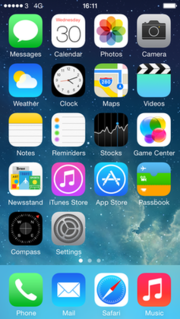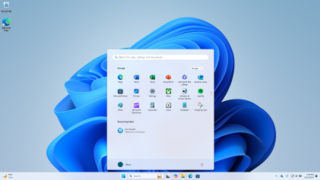 W
WAndroid is a mobile operating system based on a modified version of the Linux kernel and other open source software, designed primarily for touchscreen mobile devices such as smartphones and tablets. Android is developed by a consortium of developers known as the Open Handset Alliance and commercially sponsored by Google. It was unveiled in November 2007, with the first commercial Android device, the HTC Dream, being launched in September 2008.
 W
WChrome OS is a Gentoo Linux-based operating system designed by Google. It is derived from the free software Chromium OS and uses the Google Chrome web browser as its principal user interface. Unlike Chromium OS, Chrome OS is proprietary software.
 W
WFire OS is a mobile operating system based on the Android Open Source Project and created by Amazon for its Fire tablets, Echo smart speakers and Fire TV devices. It includes proprietary software, a customized user interface primarily centered on content consumption, and heavy ties to content available from Amazon's own storefronts and services. Apps for Fire OS are provided through the Amazon Appstore.
 W
WiOS is a mobile operating system created and developed by Apple Inc. exclusively for its hardware. It is the operating system that powers many of the company's mobile devices, including the iPhone and iPod Touch; the term also included the versions running on iPads until the name iPadOS was introduced with version 13 in 2019. It is the world's second-most widely installed mobile operating system, after Android. It is the basis for three other operating systems made by Apple: iPadOS, tvOS, and watchOS. It is proprietary software, although some parts of it are open source under the Apple Public Source License and other licenses.
 W
WiOS 4 is the fourth major release of the iOS mobile operating system developed by Apple Inc., being the successor to iPhone OS 3. It was announced at the company's Worldwide Developers Conference on June 7, 2010, and was released on June 21, 2010. iOS 4 is the first iOS version issued under the "iOS" rebranding, dropping the "iPhone OS" naming convention of previous versions. It was succeeded by iOS 5 on October 12, 2011.
 W
WiOS 5 is the fifth major release of the iOS mobile operating system developed by Apple Inc., being the successor to iOS 4. It was announced at the company's Worldwide Developers Conference on June 6, 2011, and was released on October 12, 2011. It was succeeded by iOS 6 on September 19, 2012.
 W
WiOS 6 is the sixth major release of the iOS mobile operating system developed by Apple Inc, being the successor to iOS 5. It was announced at the company's Worldwide Developers Conference on June 11, 2012, and was released on September 19, 2012. It was succeeded by iOS 7 on September 18, 2013.
 W
WiOS 7 is the seventh major release of the iOS mobile operating system developed by Apple Inc., being the successor to iOS 6. It was announced at the company's Worldwide Developers Conference on June 10, 2013, and was released on September 18 of that year. It was succeeded by iOS 8 on September 17, 2014.
 W
WiOS 9 is the ninth major release of the iOS mobile operating system developed by Apple Inc., being the successor to iOS 8. It was announced at the company's Worldwide Developers Conference on June 8, 2015, and was released on September 16, 2015. It was succeeded by iOS 10 on September 13, 2016.
 W
WiOS 10 is the tenth major release of the iOS mobile operating system developed by Apple Inc., being the successor to iOS 9. It was announced at the company's Worldwide Developers Conference on June 13, 2016, and was released on September 13, that year. It was succeeded by iOS 11 on September 19, 2017.
 W
WiOS 11 is the eleventh major release of the iOS mobile operating system developed by Apple Inc., being the successor to iOS 10. It was announced at the company's Worldwide Developers Conference on June 5, 2017, and released on September 19, 2017. It was succeeded by iOS 12 on September 17, 2018.
 W
WiOS 12 is the twelfth major release of the iOS mobile operating system developed by Apple Inc. Aesthetically similar to its predecessor, iOS 11, it focuses less on new functions than on performance, quality improvements and security updates. Announced at the company's Worldwide Developers Conference on June 4, 2018, iOS 12 was released to the public on September 17, 2018. It was succeeded for the iPhone and iPod Touch by iOS 13 on September 19, 2019 and for the iPad by iPadOS 13 on September 24, 2019. More than three years after its initial release, iOS 12 continues to receive security updates on devices that do not support iOS 13 or newer.
 W
WiPadOS is a mobile operating system developed by Apple Inc. for its iPad line of tablet computers. It is a rebranded variant of iOS, the operating system used by Apple's iPhones, renamed to reflect the diverging features of the two product lines, particularly the iPad's multitasking capabilities and support for keyboard use. It was introduced as iPadOS 13 in 2019, reflecting its status as the successor to iOS 12 for the iPad, at the company's 2019 Worldwide Developers Conference. iPadOS was released to the public on September 24, 2019. The current version is iPadOS 15.1, released on October 25, 2021.
 W
WiPadOS 13 is the first major release of the iPadOS mobile operating system developed by Apple Inc. for their iPad line of tablet computers. The successor to iOS 12 on those devices, it was announced at the company's 2019 Worldwide Developers Conference (WWDC) on June 3, 2019, as a derivation from iOS, with a greater emphasis on multitasking and tablet-centric features. It was released on September 24, 2019. It was succeeded by iPadOS 14, released on September 16, 2020.
 W
WiPadOS 14 is the second major release of the iPadOS operating system developed by Apple for their iPad line of tablet computers. It was announced on June 22, 2020 at the company's Worldwide Developers Conference (WWDC) as the successor to iPadOS 13, making it the second version of the iPadOS fork from iOS. It was released to the public on September 16, 2020. It was succeeded by iPadOS 15 on September 20, 2021.
 W
WiPadOS 15 is the third and current major release of the iPadOS operating system developed by Apple for its iPad line of tablet computers. The successor to iPadOS 14, it was announced at the company's Worldwide Developers Conference (WWDC) on June 7, 2021 along with iOS 15, macOS Monterey, watchOS 8, and tvOS 15. It was released to the public on September 20, 2021.
 W
WMeeGo is a discontinued Linux distribution hosted by the Linux Foundation, using source code from the operating systems Moblin and Maemo. Primarily targeted at mobile devices and information appliances in the consumer electronics market, MeeGo was designed to act as an operating system for hardware platforms such as netbooks, entry-level desktops, nettops, tablet computers, mobile computing and communications devices, in-vehicle infotainment devices, SmartTV / ConnectedTV, IPTV-boxes, smart phones, and other embedded systems.
 W
WQNX is a commercial Unix-like real-time operating system, aimed primarily at the embedded systems market. QNX was one of the first commercially successful microkernel operating systems. As of 2020, it is used in a variety of devices including cars and mobile phones.
 W
WTizen is a Linux-based mobile operating system backed by the Linux Foundation, mainly developed and used primarily by Samsung Electronics.
 W
WwebOS, also known as LG webOS and previously known as Open webOS, HP webOS and Palm webOS, is a Linux kernel-based multitasking operating system for smart devices such as smart TVs that has also been used as a mobile operating system. Initially developed by Palm, Inc., HP made the platform open source, at which point it became Open webOS.
 W
WWindows 8 is a major release of the Windows NT operating system developed by Microsoft. The product was released to manufacturing on August 1, 2012, and generally to retail on October 26, 2012. Windows 8 was made available for download via MSDN and TechNet and available as an upgrade to all Windows 7 users via Windows Update.
 W
WWindows 8.1 is a release of the Windows NT operating system developed by Microsoft. It was released to manufacturing on August 27, 2013, and broadly released for retail sale on October 17, 2013, about a year after the retail release of its predecessor. It was Microsoft's operating system for use on personal computers, including home and business desktops, laptops, tablet PCs and media center PCs until it was succeeded by Windows 10 on July 29, 2015. Windows 8.1 was made available for download via MSDN and Technet and available as a free upgrade for retail copies of Windows 8 and Windows RT users via the Windows Store. A server counterpart was released on October 18, 2013, entitled Windows Server 2012 R2. Microsoft ended mainstream support for Windows 8.1 on January 9, 2018, and extended support will end on January 10, 2023.
 W
WWindows 10 is a major release of the Windows NT operating system developed by Microsoft. It is the successor to Windows 8.1, which was released nearly two years earlier, and itself was released to manufacturing on July 15, 2015, and broadly released for the general public on July 29, 2015. Windows 10 was made available for download via MSDN and TechNet, as a free upgrade for retail copies of Windows 8 and Windows 8.1 users via the Windows Store, and to Windows 7 users via Windows Update. Windows 10 receives new builds on an ongoing basis, which are available at no additional cost to users, in addition to additional test builds of Windows 10, which are available to Windows Insiders. Devices in enterprise environments can receive these updates at a slower pace, or use long-term support milestones that only receive critical updates, such as security patches, over their ten-year lifespan of extended support.
 W
WWindows 10 Mobile is a discontinued mobile operating system developed by Microsoft. First released in 2015, it is a successor to Windows Phone 8.1, but was marketed by Microsoft as being an edition of its PC operating system Windows 10.
 W
WWindows 11 is a major release of the Windows NT operating system developed by Microsoft that was announced on June 24, 2021, and is the successor to Windows 10, which was released in 2015. Windows 11 was released to the public on October 5, 2021, as a free upgrade via Windows Update and Windows 11 Installation Assistant on eligible devices running Windows 10.
 W
WWindows RT is a deprecated mobile operating system developed by Microsoft. It is a version of Windows 8 built for the 32-bit ARM architecture (ARMv7). First unveiled in January 2011 at Consumer Electronics Show, the Windows RT 8 operating system was officially launched alongside Windows 8 on October 26, 2012, with the release of three Windows RT-based devices, including Microsoft's original Surface tablet. Unlike Windows 8, Windows RT is only available as preloaded software on devices specifically designed for the operating system by original equipment manufacturers (OEMs).